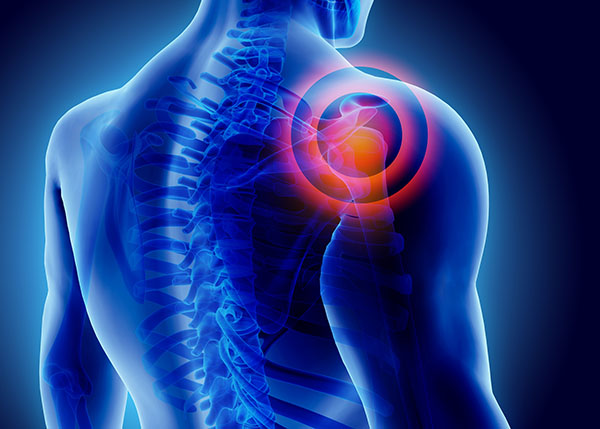Shoulder Instability
 The shoulder is comprised of a ball (the humeral head) and a socket (the glenoid). A complex array of ligaments and muscles help to keep the ball centered in the socket through our normal use of the arm. When a shoulder is unstable, the ball can become dislodged from the socket and dislocate. This can happen from an acute traumatic event such as a rough tackle in football, or it can arise from multiple small events (“microtrauma”) from repetitive overuse (pitching in baseball, for instance). Injuries to the shoulder, such as a dislocation, can begin to cause the joint to become unstable. This instability can cause further damage including repeated dislocation and other rotator cuff injuries.
The shoulder is comprised of a ball (the humeral head) and a socket (the glenoid). A complex array of ligaments and muscles help to keep the ball centered in the socket through our normal use of the arm. When a shoulder is unstable, the ball can become dislodged from the socket and dislocate. This can happen from an acute traumatic event such as a rough tackle in football, or it can arise from multiple small events (“microtrauma”) from repetitive overuse (pitching in baseball, for instance). Injuries to the shoulder, such as a dislocation, can begin to cause the joint to become unstable. This instability can cause further damage including repeated dislocation and other rotator cuff injuries.
Physical therapy is usually the first approach to try to strengthen the tendons and muscles in your shoulder but if it is not enough, surgery may be needed. The goals of surgery are to restore stability and motion to the affected shoulder. In most cases, minimally invasive surgery such as shoulder arthroscopy can be used to repair the damaged ligaments. In some instances, an open surgical approach may be chosen if prior techniques have failed, or if there is significant bone deficiency from multiple dislocations.
Surgery may be the first line treatment for young patients who are at high risk of recurrent dislocation, such as contact athletes. Some studies have shown that these patients benefit from earlier surgical intervention, bypassing the traditional method of trying physical therapy first. It is paramount that patients consult with their sports medicine physician in order to come up with the treatment strategy best for them.

